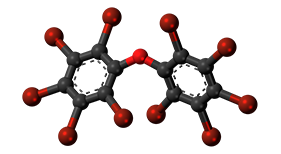
May was a busy month. I spent two days in Miami, Fla., at the Polymers in Cables Conference, followed by three days in Stamford, Conn., at the Annual Conference on Recent Advances in in Flame Retardancy of Polymeric Materials.
The annual Polymers in Cables Conference, organized by AMI, consisted of all-day presentations on various aspects of cables. Ranging from polymers, additives, processing, and flame retardants, this conference offered an opportunities for learning more about the cables business – particularly the potential for flame retardants.
While there, I spent some time with some of our long-term customers, as well as technical staffers from a company with which we are only starting to work. It’s always beneficial to meet someone in person you’ve previously only talked with on the phone. I also caught up with our suppliers from Albemarle, Chemtura / Great Lakes Solutions, and ICL. The 24th Annual FR Conference, organized by BCC Research in Stamford, was mostly academic. Unfortunately, academic research presentations can sometimes lack in practical value. However, the conference chairman decided this year to include speakers from industry to talk about the practical side of flame retardant usage in the “real world.” A scientist from Eastman spoke this year, and I’ve been invited to speak at next year’s conference.
There was a significant drop in the number of presentations related to nanocomposites in flame retardant systems this year. There was uncertainty as to why.
There were a lot of side discussions regarding regulatory issues related to flame retardant usage. No one had any real suggestions on how to deal with the negative publicity; so much of which is based on emotions and not science, generated by those opposed to flame retardant usage. Somehow, people tend to miss the fact that burning wood in a fireplace exposes people to more dioxins and carcinogens than brominated flame retardants.



